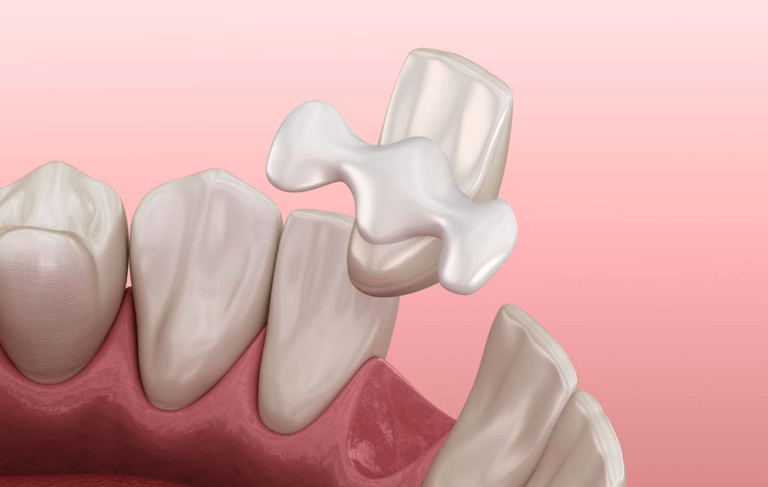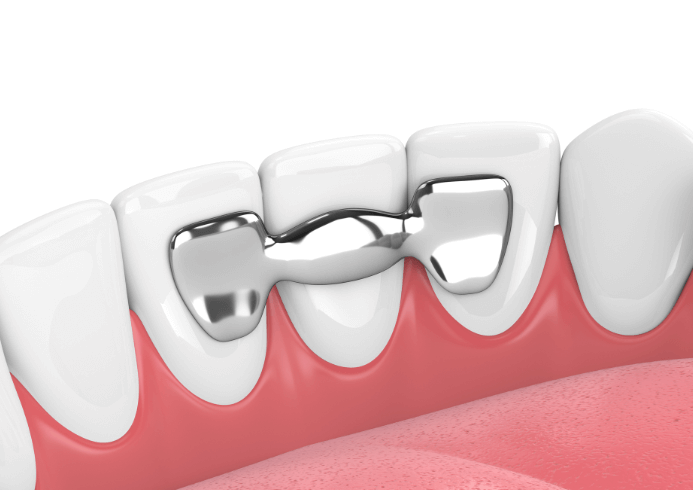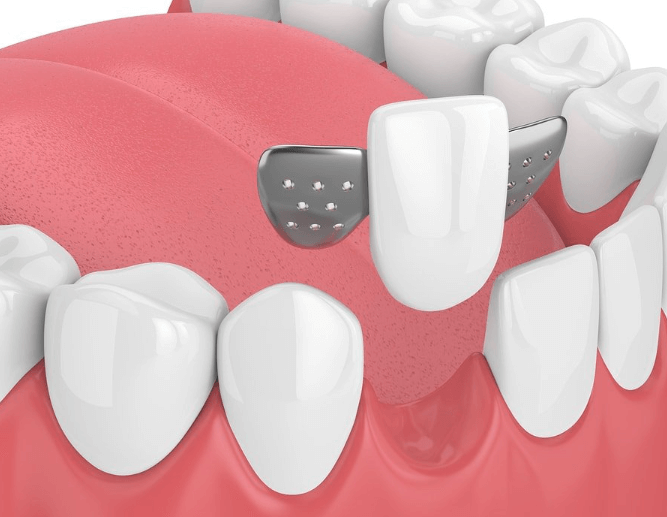Maryland Dental Bridge

What Is A Maryland Dental Bridge?
A Maryland dental bridge, also called a resin-bonded bridge, is a dental prosthetic used to replace missing teeth. Unlike traditional bridges, this option uses a conservative bonding technique, adhering a false tooth (called a pontic) to the back of the adjacent teeth with metal or ceramic “wings.” This design preserves the natural structure of the surrounding teeth, making it a minimally invasive and aesthetic solution for restoring your smile.
Before deciding on whether A Maryland Dental Bridge are right for you, there are some things you should know:
- Who Is a Candidate for a Maryland Dental Bridge?
- Benefits of a Maryland Dental Bridge
- Alternative Treatments To Maryland Dental Bridge
- How Much Does A Maryland Dental Bridge Cost?
- Steps In The Maryland Dental Bridge Procedure
- Frequently Asked Questions About Maryland Dental Bridges
If you have any further questions about A Maryland Dental Bridge or other dental services offered at Atlas Dental, please contact us.

Free phone consultation
Are you missing teeth and have questions about Dental Bridges? Schedule a free phone consultation with our GTA dentist.

5 star google reviews
Our patients love us! See why people are choosing Atlas Dental for Dental Bridges.

Book Emergency Bridge visit online
Have a problem with your Dental Bridge? Book An Emergency Dental Appointment Online.
Who Is a Candidate for a Maryland Dental Bridge?
A Maryland dental bridge may be the right option if you:
- Lost a single front tooth: Ideal for replacing incisors or canines, it maintains a natural appearance.
- Prefer a minimally invasive option: No need for extensive reshaping of adjacent teeth.
- Are unsuitable for dental implants: Due to insufficient bone density, medical conditions, or personal preferences.
- Value affordability: It’s a cost-effective alternative to other prosthetic options.
If you’re missing teeth and unsure about the best solution, consult your dentist for a personalized evaluation. If you have further questions about Maryland Dental Bridges, please contact us.
Benefits of a Maryland Dental Bridge
Maryland dental bridges offer unique advantages, such as:
- Preserving Natural Teeth: Unlike traditional bridges, they don’t require crowns on adjacent teeth.
- Aesthetic Appeal: Crafted to blend seamlessly with your natural teeth.
- Minimally Invasive Procedure: Requires only minor etching of the back of adjacent teeth.
- Quick Turnaround: Typically involves fewer appointments than implants.
- Cost-Effective: More affordable than some alternative treatments.
Your dentist will evaluate your oral health, discuss your goals, and create a personalized treatment plan that aligns with your needs and preferences. If you have further questions about Maryland Dental Bridges, please contact us.

Alternative Treatments To Maryland Dental Bridge
Here are some alternative options to a Maryland Dental Bridge you may consider:
- Dental Implants: A long-term solution for replacing teeth, but it involves surgery.
- Traditional Bridges: Requires reshaping adjacent teeth to fit crowns.
- Removable Partial Dentures: A budget-friendly, temporary option.
- Orthodontics: For minor gaps caused by tooth loss, braces or clear aligners may suffice.
Each alternative treatment comes with its own set of benefits and considerations. Consulting with your dentist is important to receive personalized recommendations based on your unique situation. If you have further questions about Maryland Dental Bridges, please contact us.
Cost of Dental Bridge
The price of a Dental Bridges will depend on the number of pontics and retainer. For example, a 3-unit bridge, for example, would cost $1234+550+1234 plus dental lab fee (approximately $600), which would equal $3618. The codes relevant to dental bridges in the Ontario Dental Association’s Suggested Fee Guide appear as follows:
Pontics, Porcelain/Ceramic/Polymer Glass
- 62501 – Pontics, Porcelain/Ceramic/Polymer Glass Fused to Metal: $550 + Dental Lab Fee
Retainers, Porcelain/Ceramic/Polymer Glass
- 67201 – Retainer, Porcelain/Ceramic/Polymer Glass: $1234 + Dental Lab Fee
Dental bridges are sometimes considered a supplementary service by dental insurance plans and may or may not be covered by your dental insurance. Be sure to find out from your dental insurance plan provider how much you are eligible for before going ahead with dental treatment. Your dentist can help you submit an predetermination to your dental insurance.
For patients without dental insurance, Atlas Dental is pleased to offer dental financing through iFinance Dentalcard. Affordable payment plans start at 7.95% for terms of 6 months to 6 years. To learn more about Dentalcard dental treatment financing, follow this link.
Steps In The Maryland Dental Bridge Procedure
Here’s an overview of the typical procedure for making a Maryland Dental Bridge:
- Consultation: Your dentist assesses your oral health and discusses your options.
- Preparation: The adjacent teeth are gently etched to create a bonding surface.
- Impressions: Accurate molds or digital scans ensure a precise fit.
- Temporary Bridge (if needed): Protects the prepared area while your permanent bridge is made.
- Placement: The custom bridge is bonded to the back of the adjacent teeth with a strong adhesive.
- Final Adjustments: Ensures comfort, proper fit, and function.
By following these steps and collaborating closely with your dentist, you can expect to achieve a restored smile that enhances both your appearance and your overall quality of life. If you have further questions about Maryland Dental Bridges, please contact us.

Frequently Asked Questions About Maryland Dental Bridges
- How long does a Maryland dental bridge last?
A Maryland bridge can last 10–15 years or more with proper care, including good oral hygiene, regular dental check-ups, and avoiding habits like grinding teeth or chewing on hard objects.
- Can I eat normally with a Maryland dental bridge?
Yes! While Maryland bridges restore functionality, avoid biting directly into hard or sticky foods to prevent damage.
- Is it painful to get a Maryland bridge?
The procedure is minimally invasive, with most patients reporting little to no discomfort.
How do I care for my Maryland dental bridge?
Maintain excellent oral hygiene by brushing and flossing daily, especially around the bridge area, to prevent plaque buildup. Regular dental visits are crucial to monitor the integrity of the bridge. Please read our home care instructions for dental bridges.
A Maryland dental bridge is an excellent option for replacing missing teeth, offering a minimally invasive and aesthetic solution. If you have further questions about Maryland Dental Bridges, please contact us.

